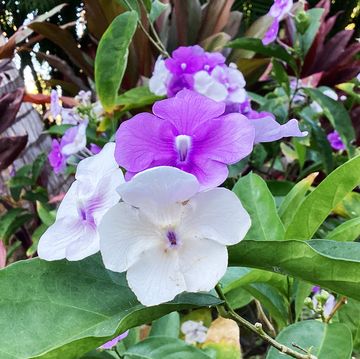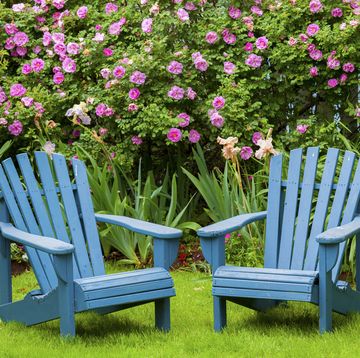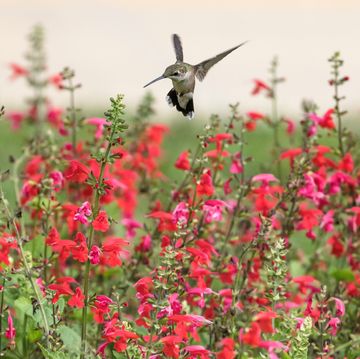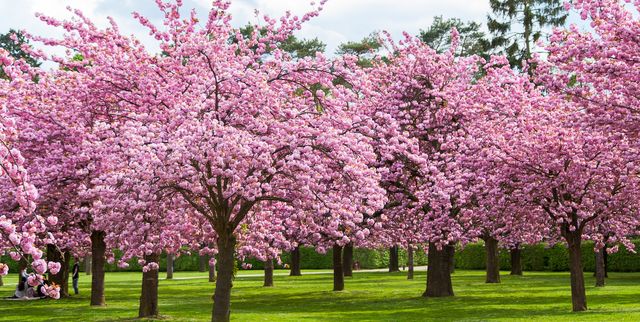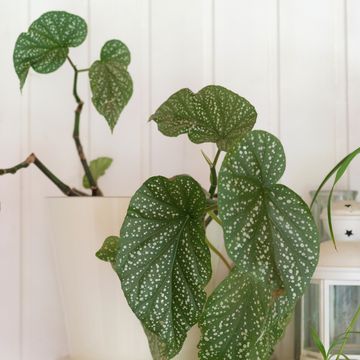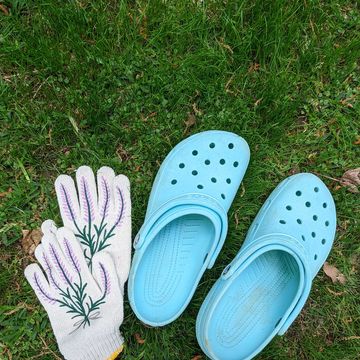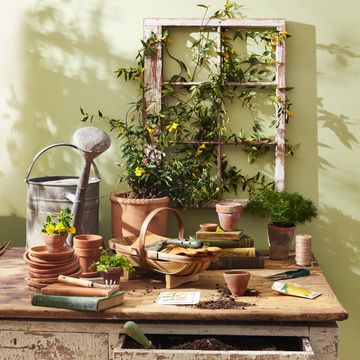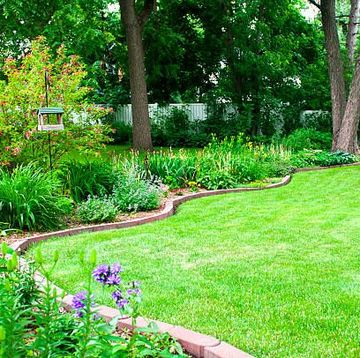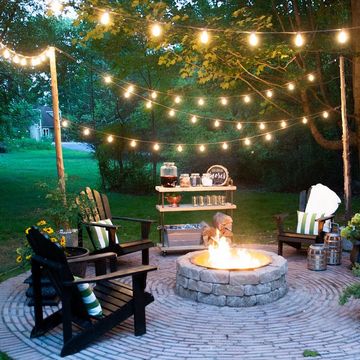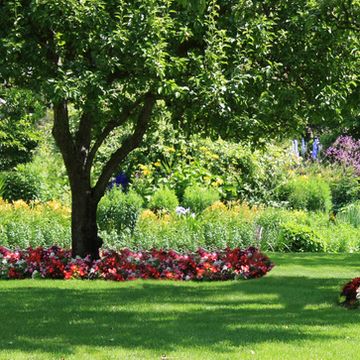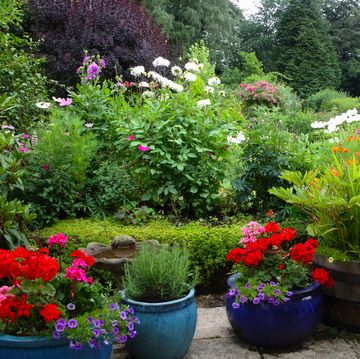1George Washington didn't actually chop down a cherry tree.
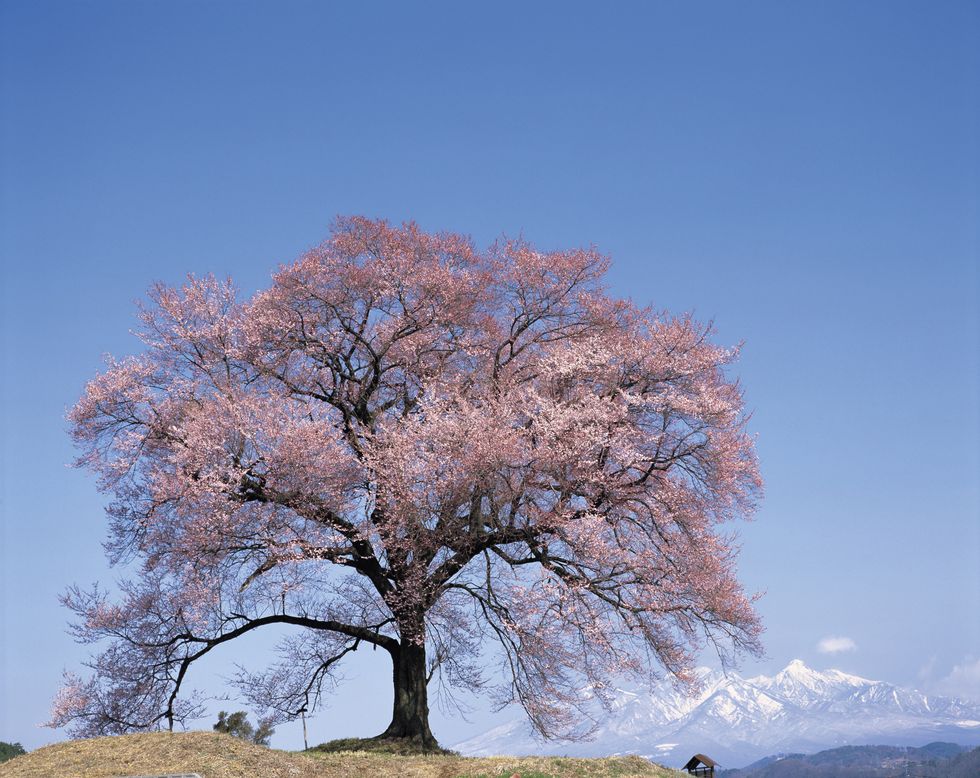 DAJ//Getty Images
DAJ//Getty ImagesYou may have heard the story of America's first president damaging his father's cherry tree with a hatchet as a young boy. When confronted about it, he allegedly confessed and said, "I cannot tell a lie." While it's an admirable anecdote about honesty, this is actually a myth made up by one of George Washington's biographers, Mason Locke Weems.
2Cherry trees have a short lifespan.
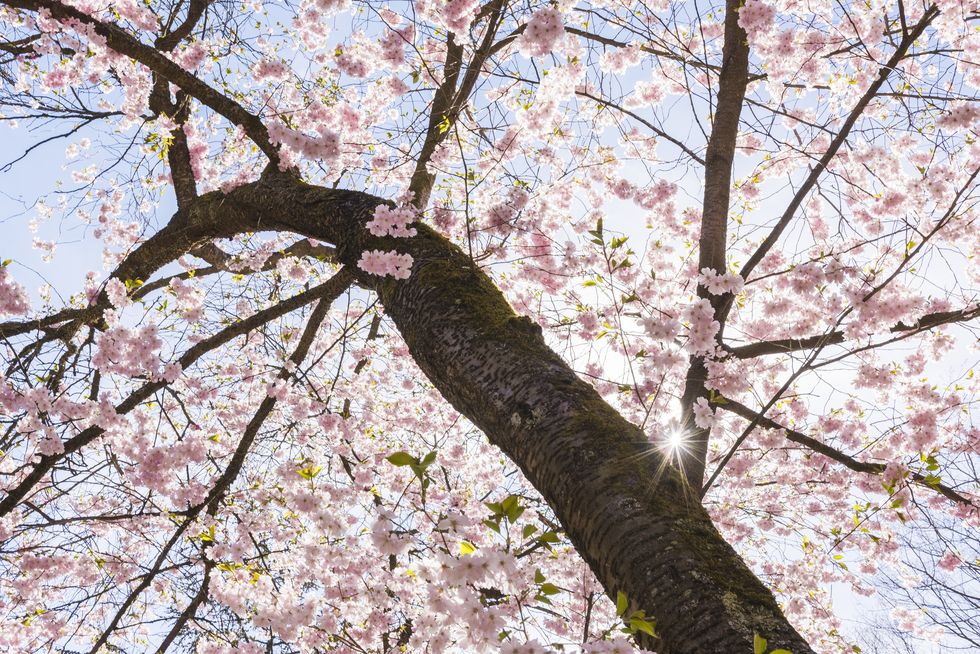 Johner Images//Getty Images
Johner Images//Getty ImagesTypically, they only last about 16-20 years. But certain species have a much longer life expectancy. Black cherry trees, for example, can live up to 250 years.
3You can get arrested for breaking off a blossom.
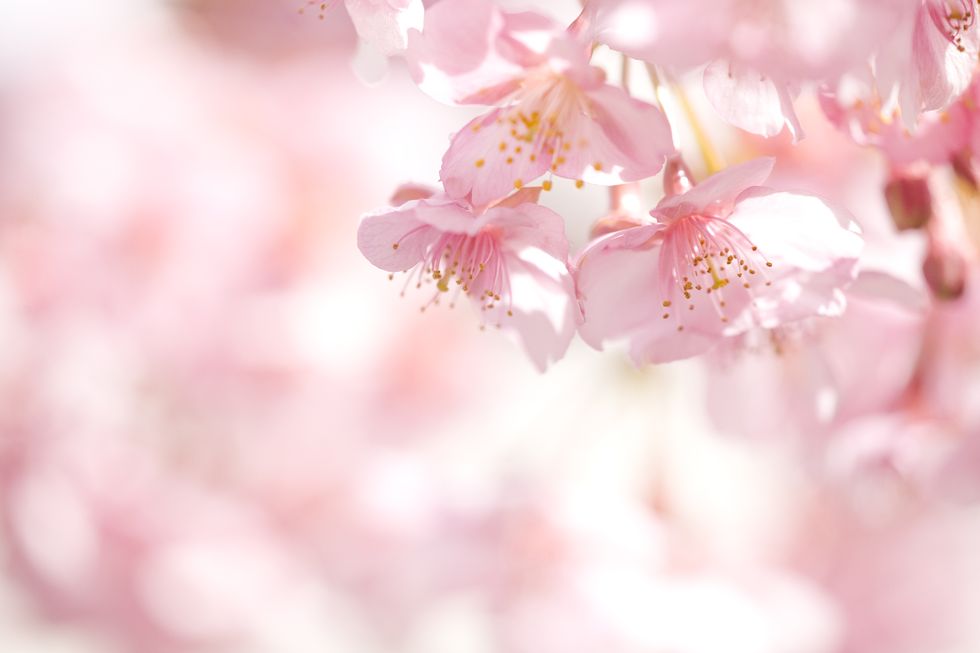 Sachiko's photography//Getty Images
Sachiko's photography//Getty ImagesYep, think again before you decide to pluck one of these pink beauties. Removing a blossom or branch is considered vandalism of federal property in Washington, D.C., which can lead to a citation or even an arrest.
Advertisement - Continue Reading Below
4Flowering cherry trees are largely ornamental.
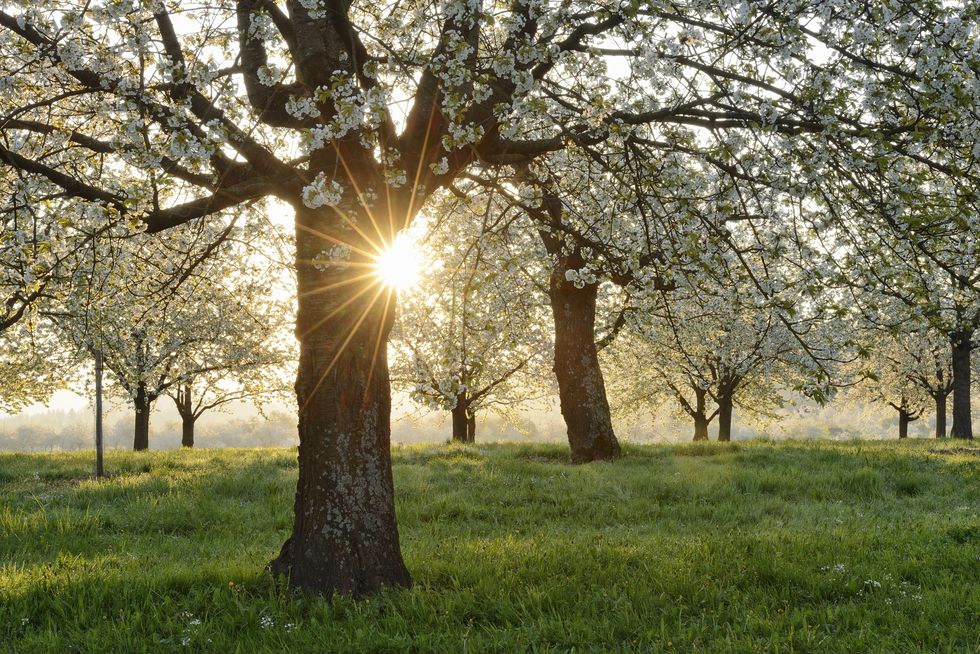 Westend61//Getty Images
Westend61//Getty ImagesThis branch of trees is largely for looks as opposed to fruit production. Ornamental cherry trees do produce fruit closely related to edible cherries, these trees are usually grown for their beauty.
5400 cherry trees in Amsterdam are individually named.
 Philipp Dase / EyeEm//Getty Images
Philipp Dase / EyeEm//Getty ImagesAll of the 400 cherry trees in Amsterdam's Amsterdamse Bos are named. In 2000, the Japan Women's Club donated the trees to the city to celebrate the two nations' relationship.
6The flower petals are edible.
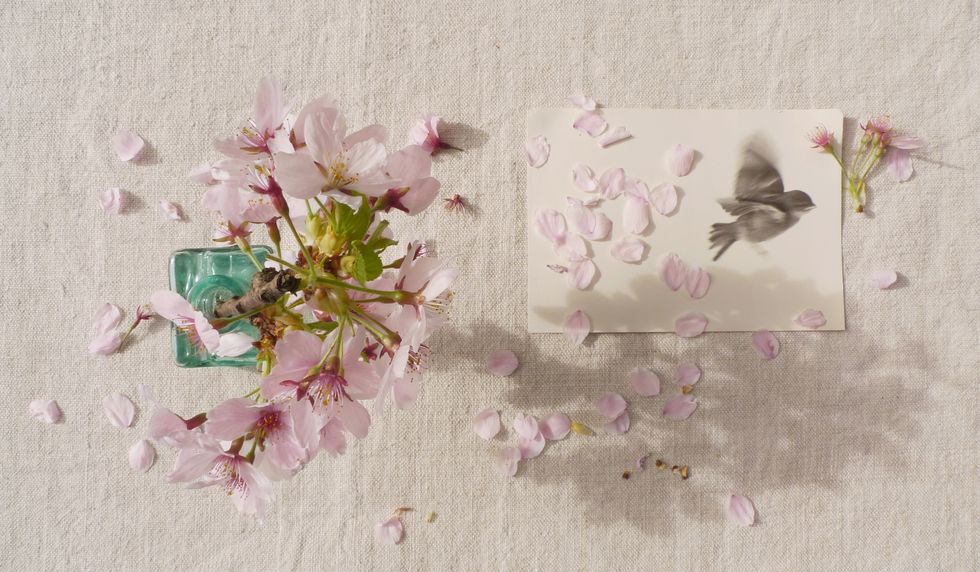 Fiona Crawford Watson//Getty Images
Fiona Crawford Watson//Getty Images Advertisement - Continue Reading Below
7Cherry blossoms symbolize renewal.
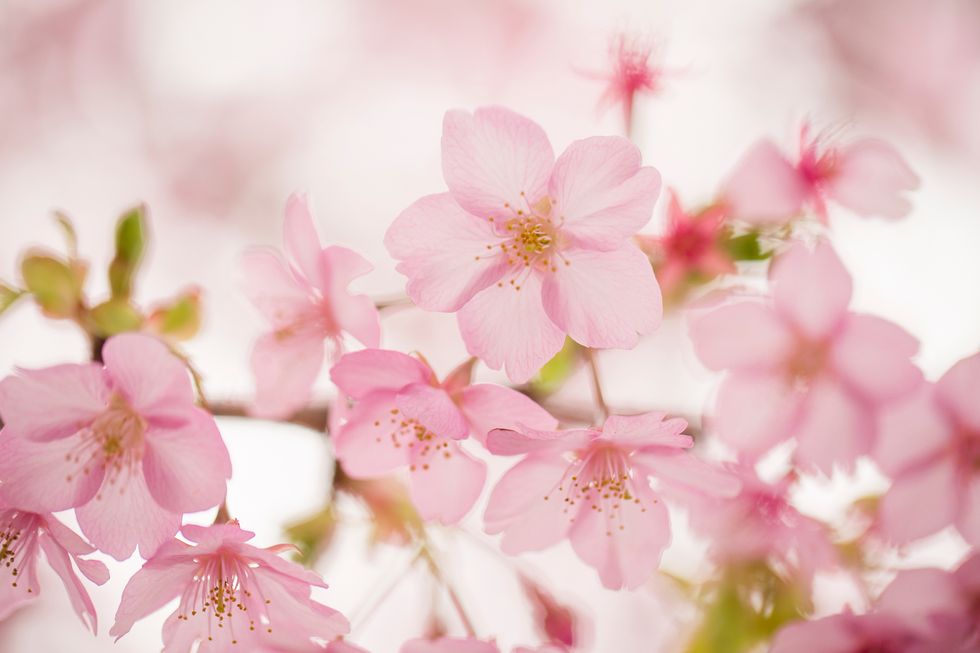 XIAOMENG LI//Getty Images
XIAOMENG LI//Getty ImagesKnown as "sakura" in Japanese, these pale blooms are a symbol of spring because it is a time of renewal. However, because the blooms are short-lived, they are also symbolic of the fleeting nature of life.
8Cherry blossom ice cream is a real thing.
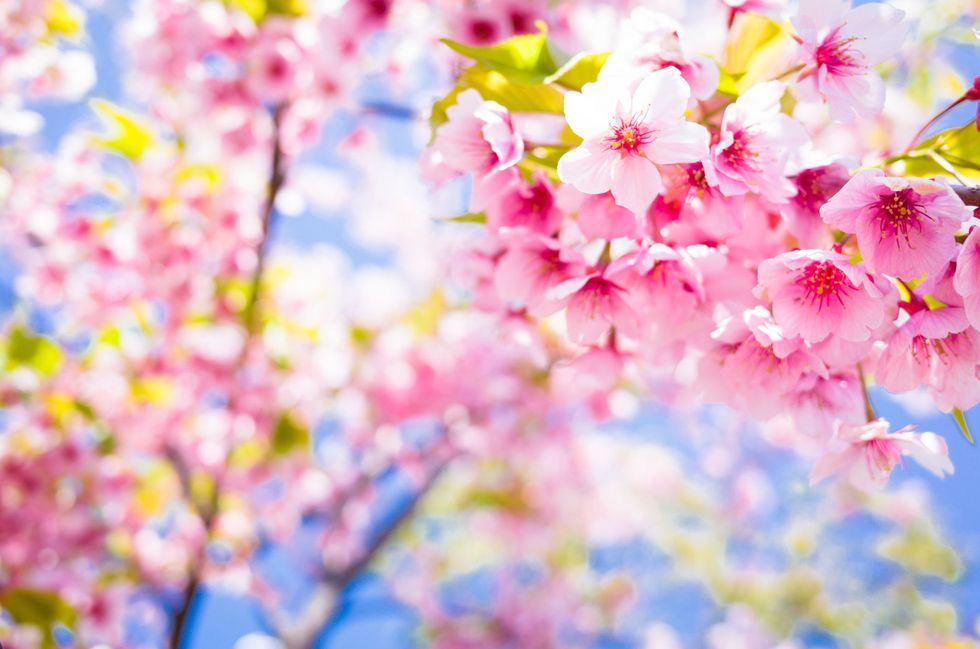 Getty Images
Getty Images 9Picnicking beneath cherry blossom trees is a Japanese tradition.
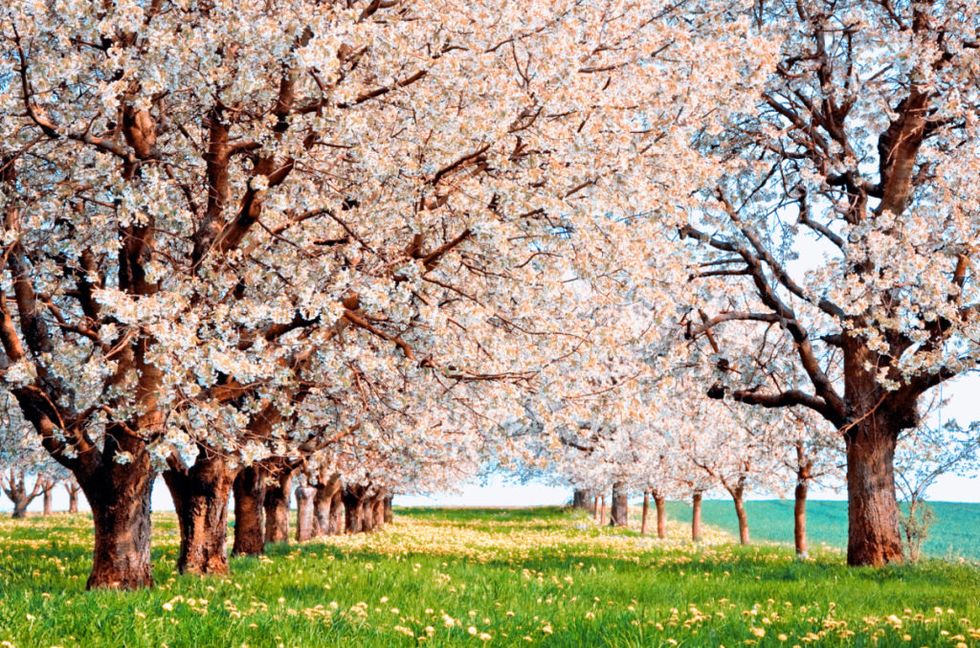 Getty Images
Getty ImagesThe century-old custom is known as "hanami," which means flower viewing. Early records hint that the tradition began with emperors and members of the Imperial Palace feasting under the trees' blooming branches.
Advertisement - Continue Reading Below
10Peak bloom is usually around April 4.
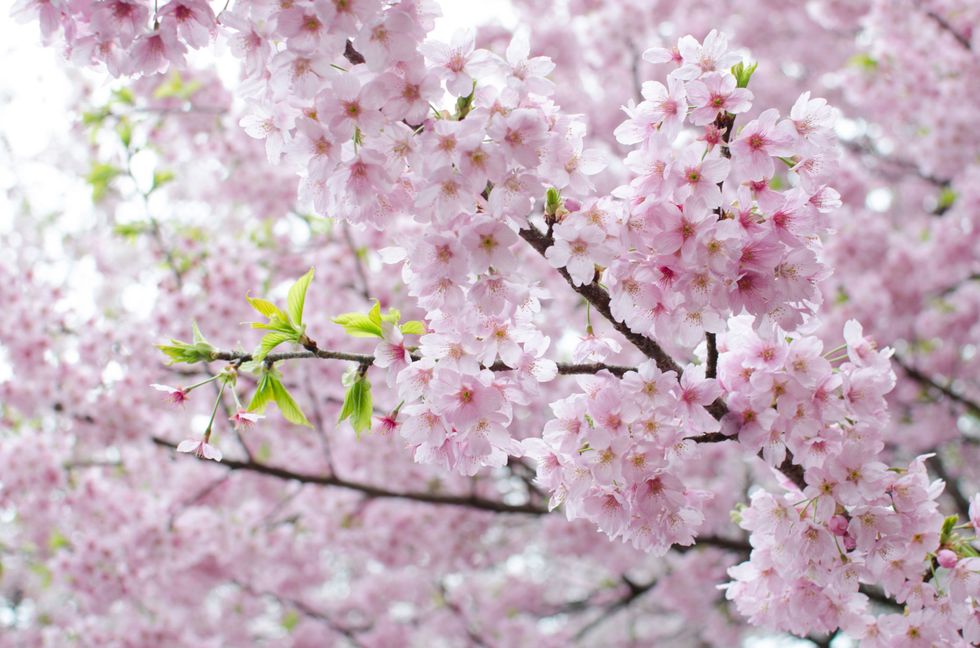 Getty Images
Getty ImagesPeak bloom varies each year in Washington D.C., but typically occurs around April 4 and can last up to 14 days. The peak bloom is the day when 70 percent of the Toshino cherry trees are open.
11Cherry trees can be huge.
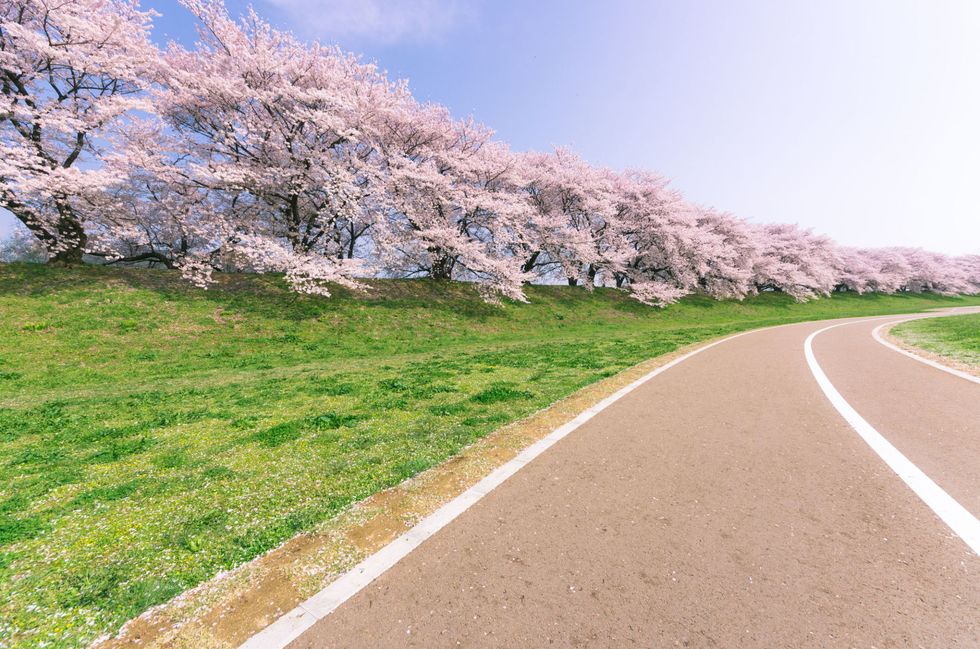 Getty Images
Getty ImagesThe ornamental Japanese cherry trees we are used to seeing average 20 to 40 feet with canopies that can reach between 15 and 30 feet. Wild cherry trees can grow up to 80 feet tall.
12"Hanami" picnics are arguably more spectacular at night.
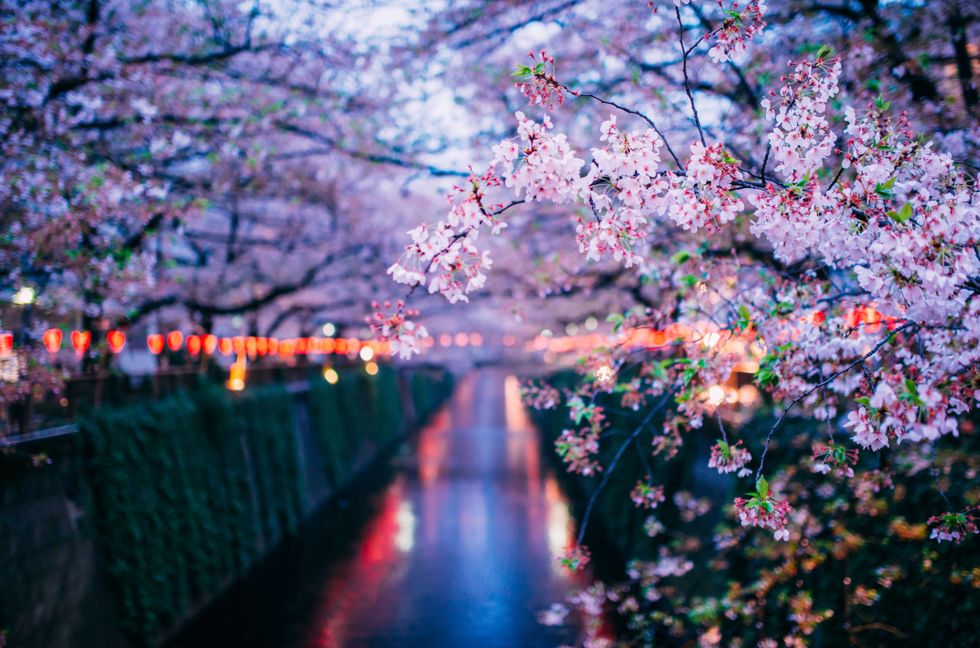 Getty Images
Getty ImagesFor these late-night picnics, known as "yozakura," the Japanese hang paper lanterns in cherry blossom trees to illuminate them.
Advertisement - Continue Reading Below
13 Cherry blossom festivals celebrate more than just spring.
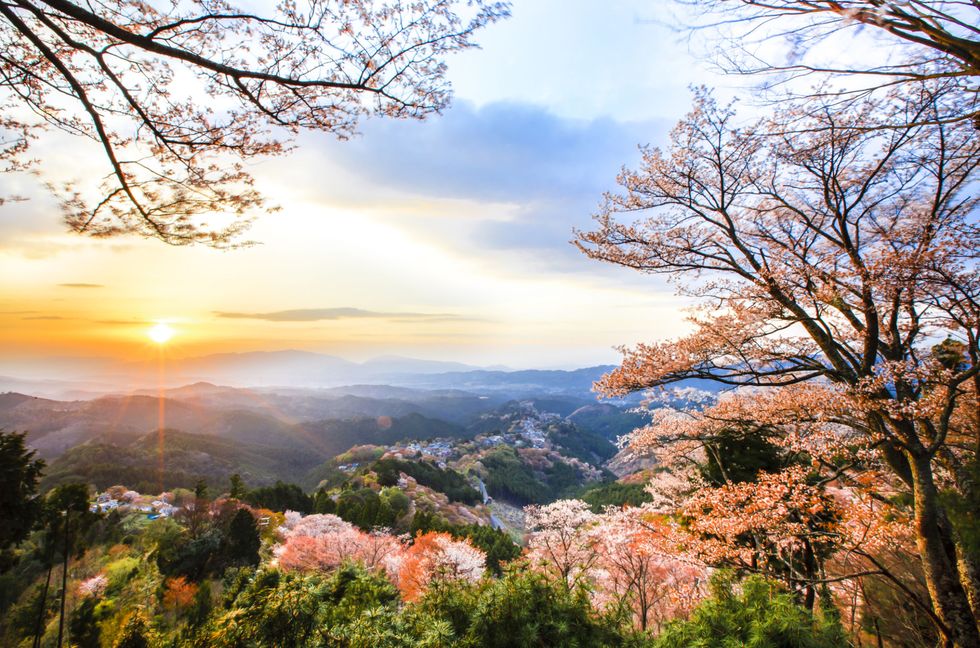 Getty Images
Getty ImagesAccording to the National Cherry Blossom Festival in D.C., the flower is celebrated as a symbol for the enduring friendship between Japan and the US. Over one million people attend D.C.'s annual festival that now lasts for four weeks.
14US cherry blossom trees date back to 1912.
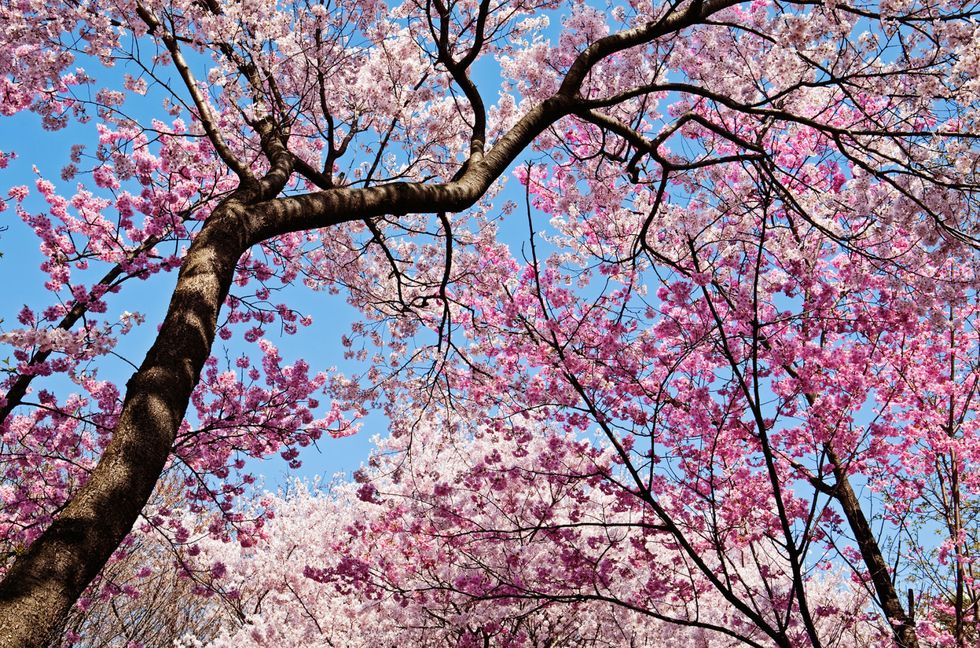 Getty Images
Getty ImagesThe first US cherry trees were planted in 1912 as a gift of friendship from Japan. Over 3,000 trees spanning 12 varieties were shipped from Yokohama to Seattle. They were then transferred to freight cars and sent to Washington, D.C.
15Japan had tried to send over cherry blossoms once before.
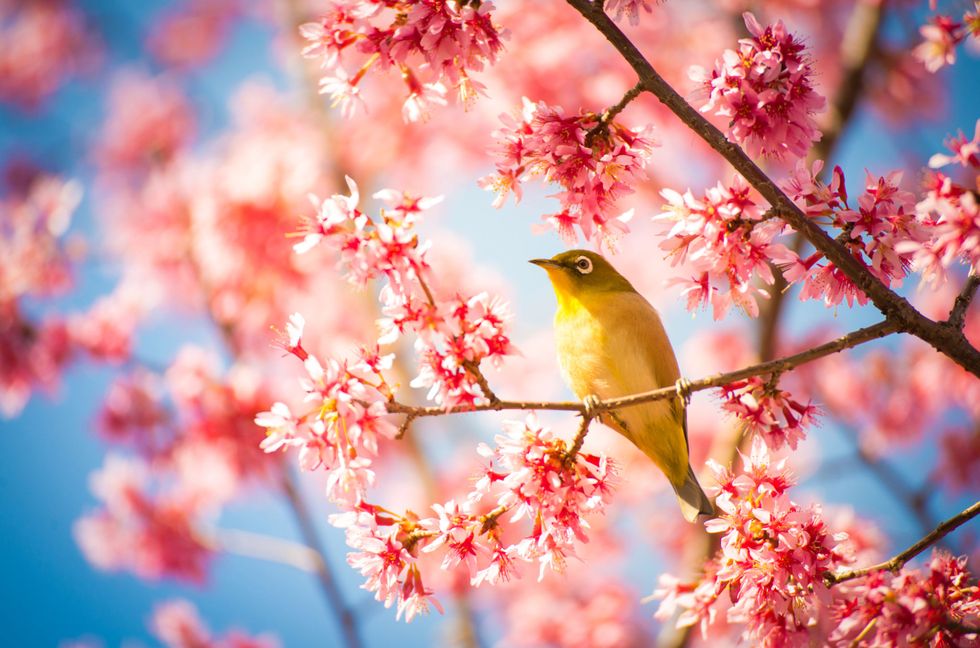 Getty Images
Getty ImagesIn 1910, US inspectors from the Department of Agriculture recommended burning the 2,000 trees sent from the Japanese after finding insects and diseases in the trees. According to Washingtonian, this nearly caused a diplomatic crisis.
Advertisement - Continue Reading Below
16Bloom predictions can't be made too far in advance.
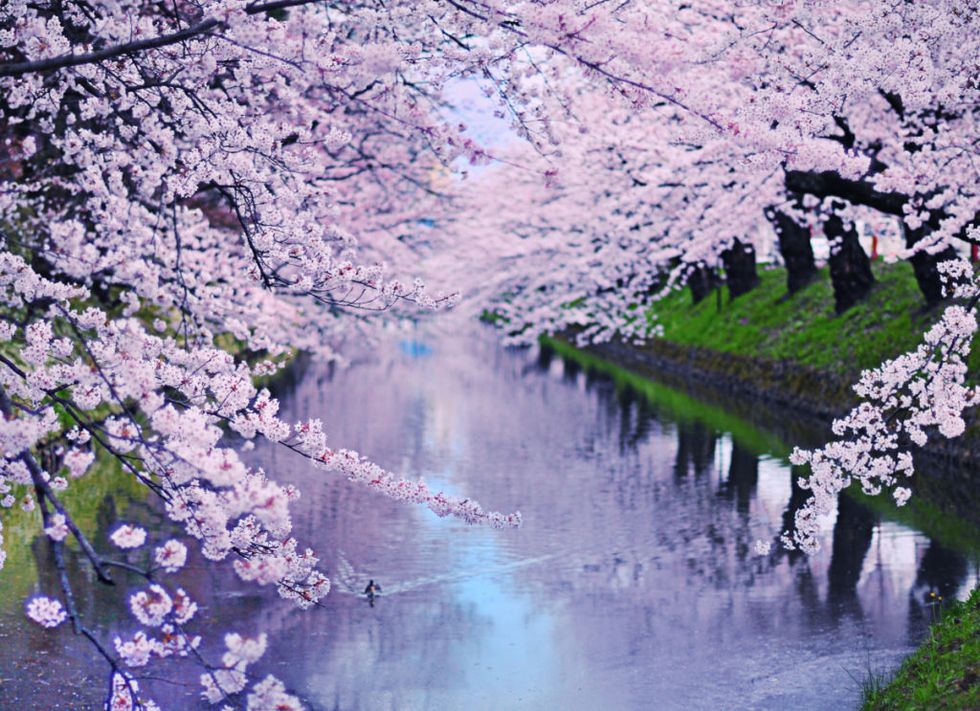 Getty Images
Getty ImagesWant to catch cherry blossoms in all their glory? You'll want to wait until March, when bloom predictions are made by the National Park Service, to plan your trip.
17They make up a top-selling fragrance in the US.
 Getty Images
Getty ImagesThe top fragrance from Bath and Body Works is consistently their Japanese Cherry Blossom. Thirty million units of the mixture of cherry blossoms, crisp pears, mimosa petals, and sweet sandalwood are sold each year.
18People seek out views of Mount Fuji behind the cherry blossoms.
 Getty Images
Getty Images Advertisement - Continue Reading Below
19There are several locations in Washington, D.C. to see the blooms.
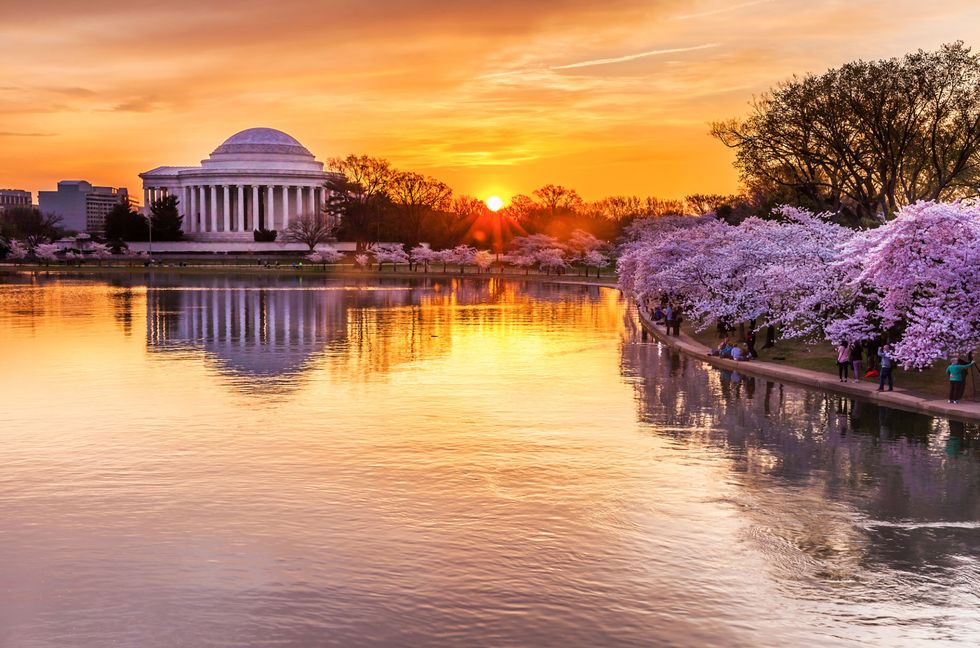 Getty Images
Getty ImagesWhile the majority of the cherry trees are near the Tidal Basin, many clusters are found along the National Mall, north of the Lincoln Memorial, and near the Washington Monument in addition to other areas in the city.
20Neither D.C. nor Japan hold the title of "Cherry Blossom Capital of the World."
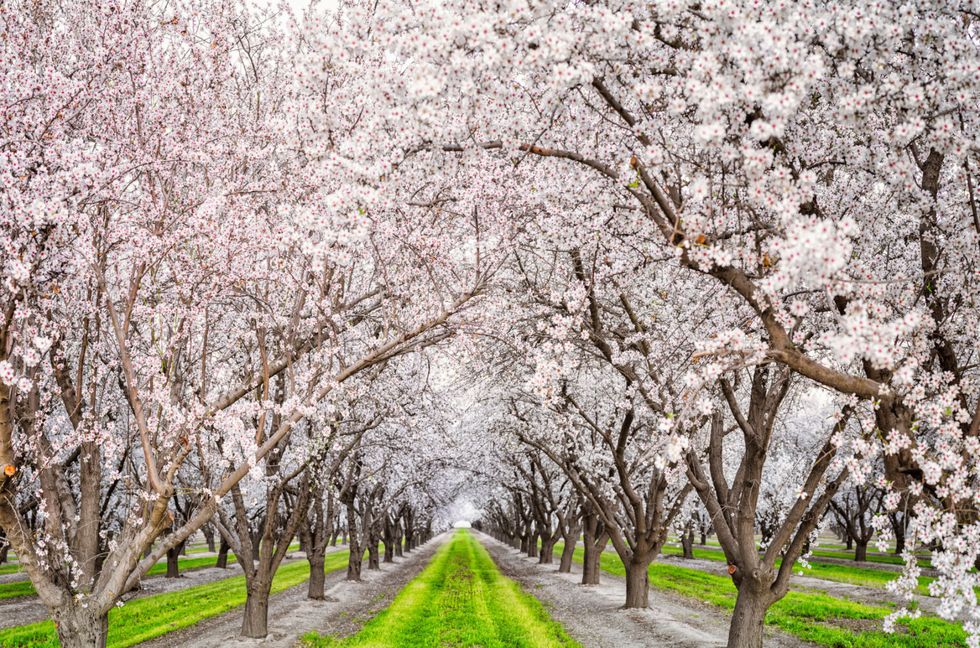 Getty Images
Getty ImagesRather, it's Macon, Georgia, which is home to over 350,000 Yoshino cherry blossom trees. That's 90 times the amount that Washington, D.C. has! While these trees obviously are not native to the South, William A. Fickling Sr., a local realtor, discovered one in his own backyard in 1949. On a business trip to Washington, D.C., he learned more about cherry blossoms and sought to bring more to his hometown.

Rebecca was the social media editor at CountryLiving.com and WomansDay.com.
Advertisement - Continue Reading Below
Advertisement - Continue Reading Below
Advertisement - Continue Reading Below

